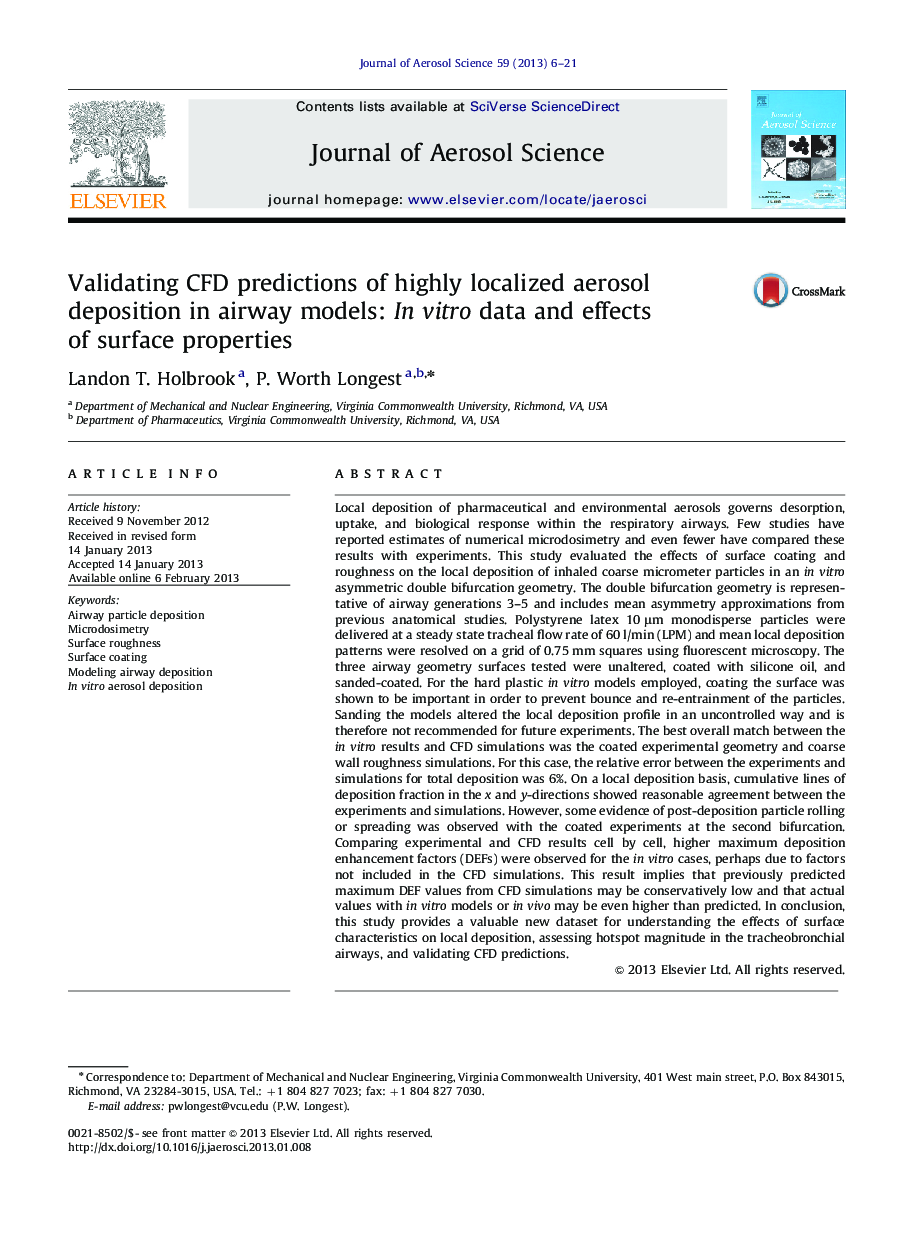| Article ID | Journal | Published Year | Pages | File Type |
|---|---|---|---|---|
| 4452562 | Journal of Aerosol Science | 2013 | 16 Pages |
Local deposition of pharmaceutical and environmental aerosols governs desorption, uptake, and biological response within the respiratory airways. Few studies have reported estimates of numerical microdosimetry and even fewer have compared these results with experiments. This study evaluated the effects of surface coating and roughness on the local deposition of inhaled coarse micrometer particles in an in vitro asymmetric double bifurcation geometry. The double bifurcation geometry is representative of airway generations 3–5 and includes mean asymmetry approximations from previous anatomical studies. Polystyrene latex 10 μm monodisperse particles were delivered at a steady state tracheal flow rate of 60 l/min (LPM) and mean local deposition patterns were resolved on a grid of 0.75 mm squares using fluorescent microscopy. The three airway geometry surfaces tested were unaltered, coated with silicone oil, and sanded-coated. For the hard plastic in vitro models employed, coating the surface was shown to be important in order to prevent bounce and re-entrainment of the particles. Sanding the models altered the local deposition profile in an uncontrolled way and is therefore not recommended for future experiments. The best overall match between the in vitro results and CFD simulations was the coated experimental geometry and coarse wall roughness simulations. For this case, the relative error between the experiments and simulations for total deposition was 6%. On a local deposition basis, cumulative lines of deposition fraction in the x and y-directions showed reasonable agreement between the experiments and simulations. However, some evidence of post-deposition particle rolling or spreading was observed with the coated experiments at the second bifurcation. Comparing experimental and CFD results cell by cell, higher maximum deposition enhancement factors (DEFs) were observed for the in vitro cases, perhaps due to factors not included in the CFD simulations. This result implies that previously predicted maximum DEF values from CFD simulations may be conservatively low and that actual values with in vitro models or in vivo may be even higher than predicted. In conclusion, this study provides a valuable new dataset for understanding the effects of surface characteristics on local deposition, assessing hotspot magnitude in the tracheobronchial airways, and validating CFD predictions.
Graphical AbstractFigure optionsDownload full-size imageDownload high-quality image (197 K)Download as PowerPoint slideHighlights► Provides a highly localized dataset of aerosol deposition for validating CFD simulations. ► Hard plastic models should be coated to adequately capture total and local deposition. ► CFD simulations including wall roughness improve comparisons with in vitro results. ► Cell by cell comparisons indicate that local maximum DEF is higher in the in vitro experiments. ► Previous CFD estimates of local maximum DEF values may be conservatively low.
